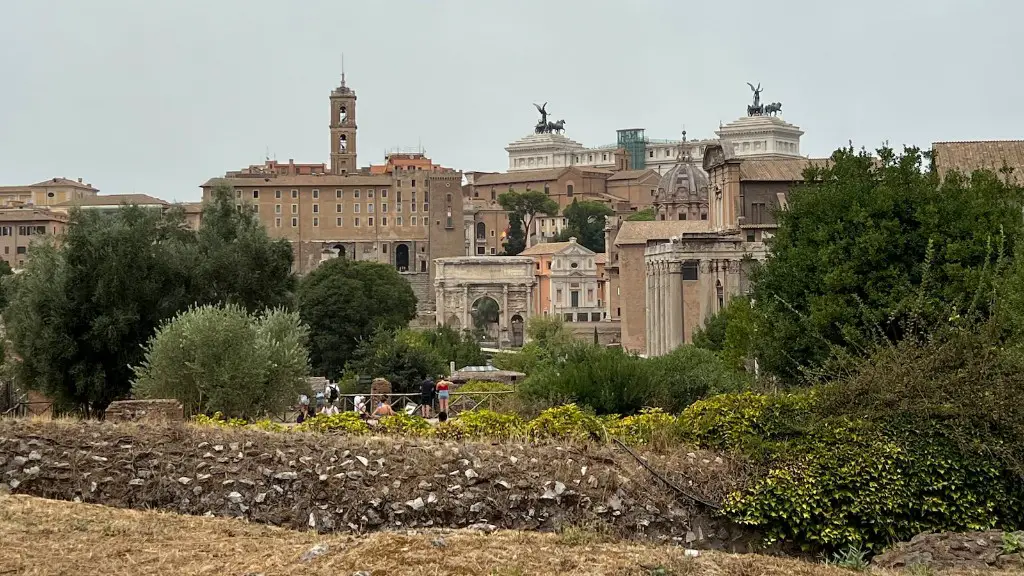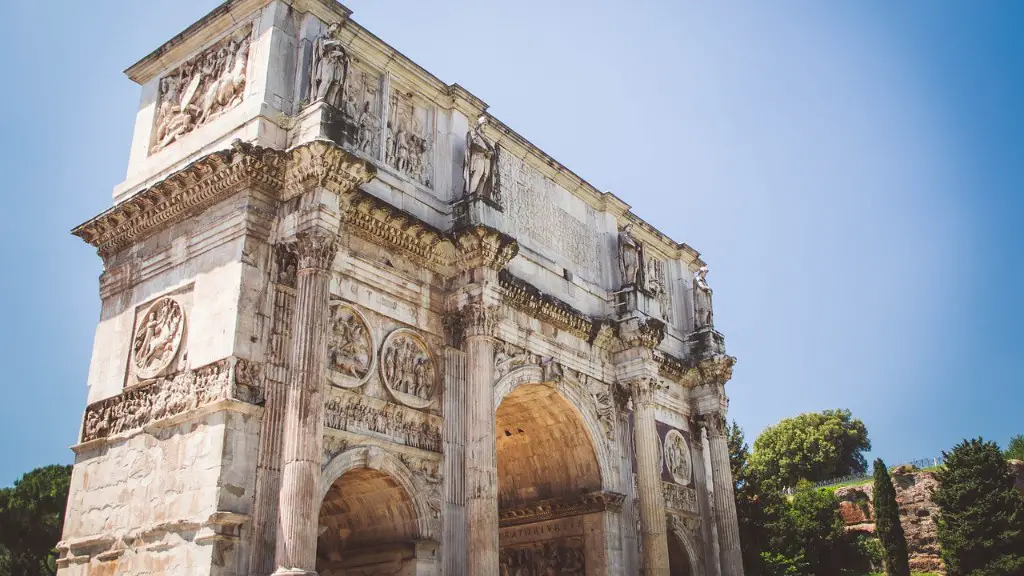The Roman State, for most of its history, was an oligarchy; a government of a small elite at the top, which led the beliefs and customs of old-fashioned republicanism that defined the boundaries of the empire. Ancient Rome had many complex and intertwined branches of government, with the senate and senate-elected officials playing a large role. The senate was the Roman Republic’s most important political body. It was a body of elected officials and contained between 300 and 600 senators at any given time, and it held veto power over most legislation.
The position of decurion was likely the most influential amongst the people of the Senate. Decurions were elected representatives, usually of the higher classes, who were responsible for making laws, overseeing public works projects, and adjudicating on legal matters. By the time of the republic, the decurion had become the de facto ruler of the Roman people and had a large influence over the senate.
The senate was responsible for foreign policy, as well as overseeing the process of legislation and taxation. The senate also had the power to grant citizenship to foreign populations, grant immunity to those accused of a crime, and pass political laws.
In addition to the senate, the civilian assembly (comitia centuriata) was one of the major governing bodies of ancient Rome. This assembly was made up of all adult male citizens who had completed their military service and were eligible to vote in the Roman Republic. The assembly was responsible for electing the consuls and other magistrates, and for deciding on matters of war and peace.
The consuls were the highest-ranking official in the Roman state and held executive power for a period of one year. They were elected by the popular assembly and served in a collegial fashion with mutual equality for their terms of office. Their main duties were to preside over the Senate, manage foreign policy, and maintain public order.
The tribunes, or the tribunes of the Plebs, were elected representatives of the plebeians, the lower classes in Roman society. The tribunes had the power to veto any laws passed by the senate, and thus had significant influence in the legislative process. They also had the power to pardon criminals, intercede in judicial proceedings, and mediate disputes between the plebeians and the patricians.
The aediles and the quaestors were other important political bodies in Ancient Rome. The aediles were magistrates responsible for maintaining public order, policing the markets, and supervising public works projects, such as aqueducts, harbors, and roads. The quaestors were responsible for managing the finances of the state and promoting commerce.
Records and Data Preservation
In order to keep records and data, Ancient Rome created the Tabularium, a government archive built in the Roman Forum. The Tabularium was responsible for preserving records of all events and transactions involving the Roman State, from census data to legal documents and military records. These records were kept in large wooden scrolls, which were stored in the Tabularium and provided a wealth of information about the different parts of the Roman Empire and the political and social life of the period.
The Tabularium was also responsible for maintaining other laws and regulations concerning the operation of the Roman State. The laws of the Twelve Tables, for instance, represented the legal foundation for the Roman system and provided important guidelines for the protection of citizens.
The pontifices, or the college of priests, were also a major political body in Ancient Rome. The pontifices were responsible for interpreting the will of the gods (and any omens they sent) and were tasked with ensuring that all Roman ceremonies were properly performed and observed. This influenced popular beliefs and also had a significant influence over law and public opinion
Social Structure
The social structure in Ancient Rome was hierarchical and class-based, with citizens divided into patricians and plebeians, who were further divided into specific classes. The patricians were members of the upper class who were wealthy landowners and had political and economic power. The plebeians were the lower class, who had limited rights and were often subject to exploitation.
The state’s role in maintaining this hierarchy was to enforce the laws governing the different classes and to protect the interests of the patricians. For example, the Lex Villia Annalis established limits on land ownership for the plebeians, and forbade the formation of guilds or trade unions. This helped to keep the wealthy at the top and the poor at the bottom of the social ladder.
The Roman State also used the law to protect its citizens from exploitation. It did so by establishing punishment for convicted criminals, creating courts for citizens to challenge grievances, and setting limits on the sale of goods. Consequently, slavery was regulated, so that slaves had some legal rights and patricians could not abuse them without legal repercussions.
Citizen Involvement
The Roman State relied heavily on the involvement of its citizens in the political process. The military was the most important means of protecting the republic, and citizens were expected to serve in the army when the state called on them. The state also enacted laws that gave citizens a say in the political processes, such as the right to vote in the popular assemblies.
The concept of the public good was also important in Ancient Rome. Citizens were expected to uphold the values of the state and contribute to its welfare by helping to maintain its infrastructure, participating in public works projects, and attending festivals. This was an important way in which the state could ensure the loyalty of its citizens and keep order in the society.
Justice System
The Roman state also placed great emphasis on justice and its legal system. The Twelve Tables set out the fundamental laws of the Roman Republic, and were responsible for laying down the foundations of criminal justice and procedure. This system of justice was then extended by the conventions of canon law and the advancement of criminal law.
The Roman justice system valued the principle of equality and took a humane approach to criminal justice, allowing for the mitigation of sentences for certain crimes and allowing for pardons and criminal rehabilitation. Punishments for serious crimes included exile, imprisonment and death, but the justice system also relied on practices of restitution and fines to punish offenders.
Although the Roman justice system was largely impartial, it was occasionally subject to political manipulation. The senate was responsible for overseeing criminal proceedings, and often intervened in cases in order to protect the interests of powerful politicians. This led to cases of corruption and abuse of power, although these incidents were rare.
Military
The Roman State also relied upon military might to maintain its dominance over its vast empire. The army was well-disciplined, with complex military tactics and organization, and highly-trained troops. Military commanders were generally of the aristocratic class and held a great deal of power.
One of the most significant achievements of the Roman military was the military road system. This system allowed for the army to move troops quickly over long distances, and it helped to facilitate trade and communication across the many provinces of the empire.
The Roman State also had a navy, albeit a less powerful one, which was used to protect the coasts from pirates and to project power in naval battles. The navy was also involved in trade, as the Roman state controlled many of the major ports in the Mediterranean.
Lastly, the Roman military also constructed a formidable network of fortifications and walls such as the Antonine Wall in Britain, which served to protect the empire’s borders from invasion.
Cultural Legacy
Despite its eventual decline, the Roman State has been hugely influential in the development of western culture. The concept of the nation-state, the legal system, and the idea of the public good were all key elements of the Roman system.
In addition, the extensive network of roads constructed by the Roman military had a lasting impact on the region. Rome’s roads, aqueducts, and monuments all served as testaments to the power and sophistication of the state and its citizens.
The cultural contributions of the Roman State have had a far-reaching impact. Its political institutions, justice system, and military structure served as the basis for western civilization and are still studied today. Roman culture, art, language, law, and architecture all serve to remind us of the accomplishments of the Roman State and its lasting legacy.

